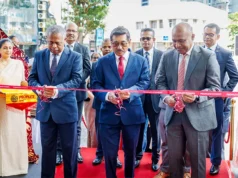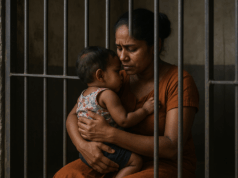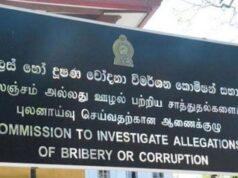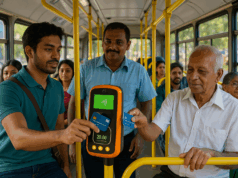by Prof. Chanaka Jayawardhena,
Professor of Marketing, University of Surrey, UK.
Chanaka.j@gmail.com
Sri Lanka finds itself at a crossroads. The devastation caused by Cyclone Fengal, which displaced over half a million people, destroyed critical infrastructure, and claimed numerous lives, highlights the country’s vulnerability to natural disasters. At the same time, the nation is tentatively emerging from its first-ever sovereign debt default, buoyed by a $12.5 billion bond swap and an IMF bailout. Together, these events pose an urgent question: Can Sri Lanka navigate the treacherous path of recovery without derailing its fragile economic stability?
The answer lies in the delicate balance the government must strike. Cyclone Fengal is more than just a natural disaster—it is a stress test for the economic goodwill painstakingly built up over the past year. How Sri Lanka’s policymakers respond could define the trajectory of its recovery for years to come. This is not just about reconstruction; it is about rethinking priorities, leveraging the current crisis as an opportunity to build resilience, and ensuring the hard-won economic gains are not squandered in the process.
Cyclone Fengal: A Catalyst for Change or a Step Backward?
The immediate economic impact of Cyclone Fengal is staggering. Agriculture, one of the backbones of Sri Lanka’s economy, has suffered significant losses, with thousands of acres of paddy fields and tea plantations—critical export sectors—being submerged. Damaged transport networks have disrupted supply chains, delaying the movement of goods and escalating costs for businesses and consumers alike. The government now faces the twin challenges of financing disaster relief and rebuilding vital infrastructure, all within the constraints of a tight fiscal envelope.
The human cost is equally dire. Families have lost homes, livelihoods, and loved ones. The socio-economic fallout of such displacement is long-lasting, with vulnerable communities pushed further into poverty. Moreover, the environmental damage, including soil erosion and the destruction of ecosystems, adds another layer of complexity to recovery efforts.
Yet, there is an opportunity amidst this tragedy. Disasters often serve as catalysts for long-overdue reforms. Cyclone Fengal could prompt Sri Lanka to implement policies aimed at climate resilience, investing in infrastructure that can withstand future storms and floods. Such investments would not only protect lives and livelihoods but also reduce the economic disruptions caused by such events. However, realising this opportunity requires vision, coordination, and a clear commitment to long-term planning—qualities that have not always been hallmarks of Sri Lankan governance.
The risks, however, are equally pronounced. With limited fiscal space and the need to adhere to IMF conditionalities, there is a real danger that recovery efforts might siphon funds away from critical economic reforms. If mismanaged, this could erode investor confidence, putting at risk the progress made in stabilising the economy. The government must guard against the temptation to prioritise short-term relief over the long-term restructuring that is vital for sustainable growth.
Debt Restructuring: The Elephant in the Room
Sri Lanka’s recent $12.5 billion bond swap was a bold move to address its debt crisis, but the relief it offers is conditional. Investors and international institutions are closely watching how the government navigates its commitments to fiscal discipline and structural reform. Cyclone Fengal has now added an unexpected layer of complexity to this equation.
The IMF bailout, which released $333 million in its latest tranche, demands not only fiscal prudence but also tangible progress in revenue generation and state enterprise restructuring. These measures, while necessary, are politically sensitive and require a stable economic environment to succeed. The cyclone’s aftermath threatens to upset this balance, with rising expenditure on disaster relief potentially crowding out these reforms.
Moreover, the bond swap itself is not without controversy. While it offers breathing room, it also raises questions about the sustainability of Sri Lanka’s debt strategy. With global interest rates on the rise, the cost of future borrowing could escalate, particularly if the government fails to demonstrate fiscal discipline. In this context, the pressure to deliver results has never been greater. Successfully managing this dual challenge of recovery and reform will be the ultimate test of Sri Lanka’s political and economic leadership.
Lessons from other economies
Sri Lanka is not the first country to face the dual challenge of disaster recovery and economic reform. Indonesia’s response to the 2004 tsunami offers valuable lessons. By channelling international aid into long-term development projects and maintaining fiscal discipline, Indonesia turned a crisis into an opportunity for economic transformation. Key to its success was the establishment of a dedicated reconstruction agency that ensured transparency and accountability in the use of funds.
Bangladesh, another country prone to natural disasters, has demonstrated how investing in disaster preparedness—through early warning systems, robust infrastructure, and community education—can mitigate economic losses. These measures have not only saved lives but also reduced the financial impact of natural disasters, enabling the economy to recover more quickly.
Sri Lanka would do well to follow these examples. The establishment of a specialised disaster management authority with a clear mandate and adequate funding could go a long way in ensuring a coordinated and effective response. Such an agency could also play a critical role in securing international aid, which is often contingent on transparent governance and accountability. Ensuring such mechanisms are in place will be crucial to sustaining international goodwill and ensuring long-term economic stability.
Investing in Resilience
The case for strategic investment in resilience is clear. Renewable energy projects, for instance, could reduce the country’s reliance on costly fuel imports while aligning with global sustainability trends. Sri Lanka’s abundant natural resources—sunlight, wind, and hydro potential—position it well to transition to a greener energy mix. Such investments would not only lower energy costs but also make the economy less vulnerable to global fuel price shocks.
Rebuilding transport and communication networks with a focus on durability would also yield significant benefits. Modern, resilient infrastructure is essential for economic growth, facilitating trade, tourism, and investment. Furthermore, the construction phase itself could create jobs, providing a much-needed stimulus to the domestic economy.
Public health must also be a priority. The cyclone has triggered a surge in dengue cases, exposing gaps in the healthcare system’s ability to respond to emergencies. Strengthening healthcare infrastructure and preventive measures could yield significant economic and social dividends. Healthier populations are more productive, and the costs of prevention are far lower than those of treatment and lost productivity.
Building on Goodwill
Sri Lanka enters this challenging phase with a degree of goodwill that is rare for a country emerging from economic collapse. The Central Bank’s policy rate reforms and the government’s efforts to stabilise public finances have been cautiously welcomed by investors. Moody’s recent decision to place Sri Lanka’s credit rating under review for a potential upgrade reflects this optimism.
However, goodwill is a finite resource. The government must tread carefully, avoiding populist measures that could derail its reform agenda. Transparency in disaster relief spending and clear communication about the trade-offs involved in balancing recovery with reform are essential. Failure to do so could erode the trust of both domestic and international stakeholders.
The risk of political complacency is real. The government’s recent electoral mandate, while overwhelming, should not be taken as a licence to abandon fiscal prudence. Populist policies, such as unsustainable subsidies or tax cuts, could undo the progress made and jeopardise long-term stability.
A Path Forward
Cyclone Fengal has exposed the vulnerabilities in Sri Lanka’s economic and social fabric, but it has also provided an opportunity to address them. The government’s response must be both immediate and strategic, balancing the urgency of disaster relief with the long-term necessity of economic reform.
First, the government must prioritise investments that yield both short-term relief and long-term benefits. For example, rebuilding flood-damaged roads and bridges with climate-resilient materials can create jobs today while reducing costs in the future. Second, it must strengthen institutions to ensure that recovery funds are used effectively and transparently. Third, it must actively engage with international partners, not only for financial support but also for technical expertise in disaster management and economic planning.
Sri Lanka’s recovery is not just a matter of economics; it is a test of governance, competence, and foresight. By investing in resilience, maintaining fiscal discipline, and leveraging international goodwill, the country can navigate this crisis and emerge stronger. The stakes are high, but so are the potential rewards. This is a moment for bold but measured action—a chance to turn adversity into a turning point for sustainable growth.
The eyes of the world are on Sri Lanka. Let this be the moment when it rises to the challenge.








